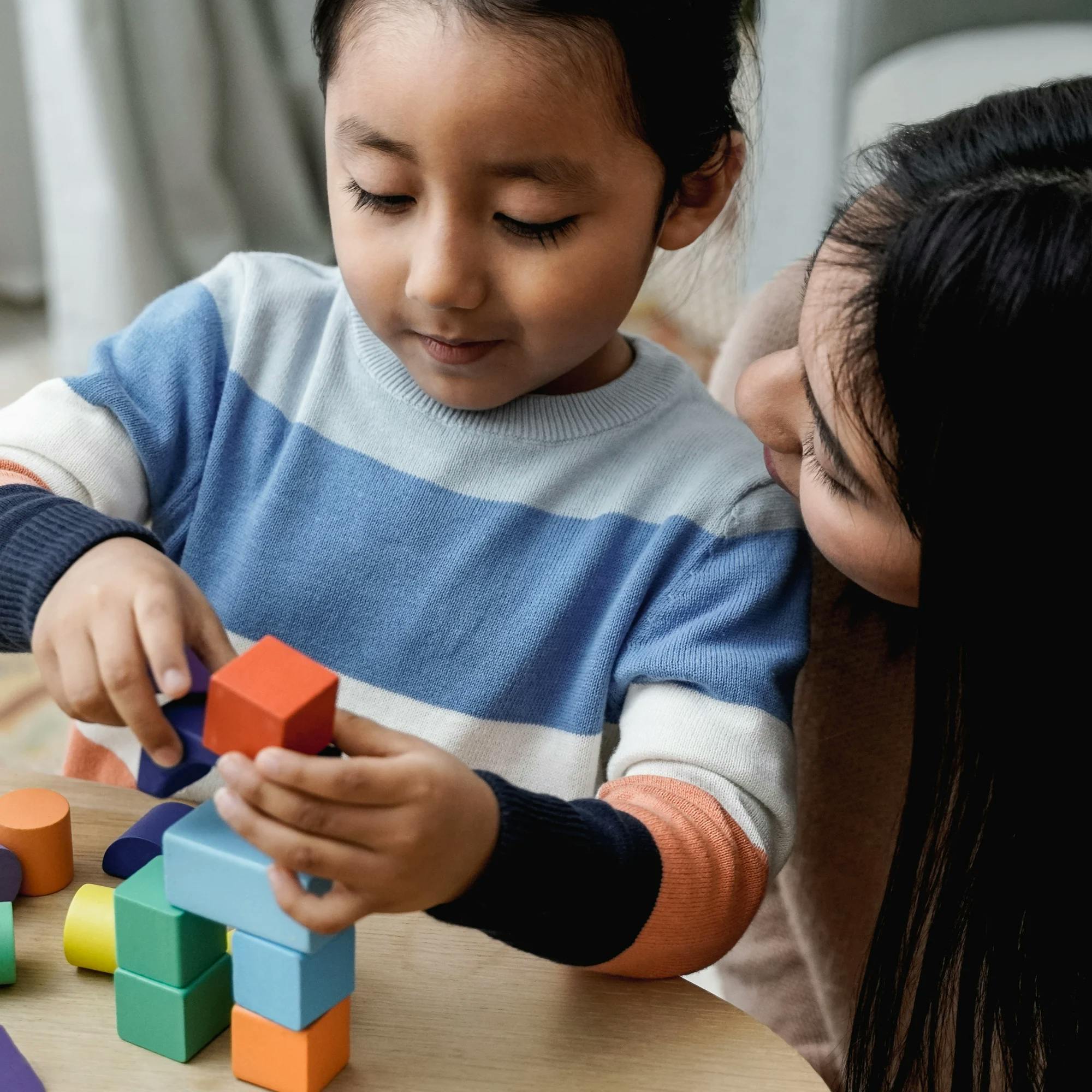
What Is Neurodiversity, and How Is It Related to Speech Therapy for Autism?
 Alexis Irazoque, M.S., CCC-SLP
Alexis Irazoque, M.S., CCC-SLP
No two brains are exactly alike, and that’s an amazing thing! Neurodiversity is a natural part of being human. So it’s important to learn what it means and how to support people who are neurodivergent, such as those who are autistic. If you’re the caregiver of an autistic child, it’s also important to find a speech therapist who is neurodiversity-affirming. Read on to learn what neurodiversity is and what neurodiversity-affirming care looks like.
What is “neurodiversity” and “neurodivergence”?
According to the CDC, 1 in 31 children is autistic. Since most of us probably know someone who is autistic, understanding neurodiversity is important for us in helping to create a more inclusive and accessible world.
Neurodiversity refers to the idea that everyone’s brains work differently, and these differences are natural.
People whose brains work differently than what society considers “normal” are considered neurodivergent. Neurodivergent people may have differences in communication, learning, social preferences, and behavior. The focus of this article is on autism, but other examples of neurodivergence include conditions such as ADHD, dyslexia, Tourette syndrome, and more.
What does it mean to be neurodiversity-affirming?
The term neurodiversity-affirming refers to people (such as parents, caregivers, teachers, and therapists) who view these brain differences as natural. They provide care to neurodivergent people by accepting their differences, focusing on their strengths, and working to support them while building new skills.
The term neurodiversity-affirming refers to people who view brain differences as natural.
It’s important to note that being neurodiversity-affirming doesn’t mean we deny that neurodivergent people may have challenges. Rather, we provide support and accommodations in areas that are meaningful to the person and their families, instead of trying to “fix” them. We presume the person is competent, and when challenges come up, we find ways to adjust the environment and increase society’s understanding while helping the person build new skills.


What is a neurodiversity-affirming speech therapist?
A neurodiversity-affirming speech therapist will support a child’s communication skills as they move through the stages of language development. We don’t view neurodivergence as something to be “cured.” A neurodivergent person’s communication skills may look different than we expect, and that’s okay! We support them in their development of communication skills that feel authentic to them so they can grow, laugh, and connect with others.
A neurodivergent person’s communication skills may look different than we expect, and that’s okay!
Autism is not a behavior that can be fixed. It’s a difference in the wiring of the brain. A neurodivergent brain comes with many strengths, which is why neurodiversity-affirming speech therapists take a developmental, strengths-based approach. This means that the speech therapist will assess the child’s unique strengths and provide more learning opportunities that build on those strengths. This is different from a behavioral approach, which focuses on identifying the child’s weaknesses and modifying or eliminating those behaviors.


What does neurodiversity-affirming speech therapy look like?
Here are a few things I see as the foundation for a neurodiversity-affirming approach to care. These examples relate to speech therapy, but the concepts can apply to parents, caregivers, teachers, and other therapists as well!
Focusing on the relationship: The most important foundation for a neurodiversity-affirming approach is a safe, warm, joyful relationship between the therapist and the child. Often this means the therapist will take a play-based approach, focusing on activities that the child enjoys! Although it may not look like “work,” they’re getting to know your child’s individual differences and preferences, which allows them to work toward goals more effectively.
Taking a strengths-based, developmental approach: This means considering where a child is developmentally and building upon their existing skills. This helps a child learn and understand communication skills in stages, rather than teaching them how to exhibit a behavior for a reward. It’s important to work through each stage of development, supporting them as they learn and grow.
We should try to see things from the child's perspective just as much as we encourage them to take our perspective.
Finding a shared world: It’s not our job to pull the child into our world and what we think “typical” children should be doing (for example, encouraging a child to roll cars around a track rather than line them up). An autistic child’s play skills may look different than we expect! It’s our job to have an attitude of curiosity about their world, join them in it, and then build on that to discover a shared world for both of us. We should try to see things from their perspective just as much as we encourage them to take our perspective.
Changing our language: It’s important for therapists to ask families and clients what terms they prefer when talking about autism. For example, the larger autism community usually prefers identity-affirming language, meaning they’d say “autistic person” rather than “person with autism.” We also try to refer to autistic people who don’t communicate with words as “nonspeaking” rather than “nonverbal.” But it’s also true that some people have different preferences, so it’s important to ask each family.


The importance of listening to autistic people
One of the best ways we can learn more about how to be neurodiversity-affirming is by listening to autistic people! We should listen to their experiences and perspectives, and then (most importantly!) adjust our approach based on what we learn from them.
There are many blogs and other publications written by autistic adults in which they share valuable information about what it means to be inclusive. Some of my favorites are Autism Self-Advocacy Network (ASAN), Rachel Dorsey, SLP, and Temple Grandin.
Some additional resources about neurodiversity-affirming care written by neurotypical people in collaboration with autistic people are the book Uniquely Human, resources on the website Play Spark, and resources by Jessie Ginsburg, SLP.
An important note about our use of identity-first language: When speaking about any community as a whole, our goal is to prioritize that community’s voices and preferences. Within the larger autism community, the current language preference is identity-first. Expressable is committed to learning from the populations we serve. If and when their preferences change, we’ll adjust our approach accordingly.
How Expressable Can Help
Concerned your child isn't reaching age-expected milestones? Looking for communication support from a professional? Expressable is a national online speech therapy practice serving children and adults. We treat all major areas of communication and feeding, offer flexible hours including evenings and weekends, and accept most major health insurance plans. We’re proud to have earned more than 3,000 5-star reviews from our clients (4.9/5 average).
Our therapy model is centered on parent and caregiver involvement. Research proves that empowering caregivers to participate in their loved one’s therapy leads to better outcomes. That’s why we combine live, 1-on-1 speech therapy with personalized education and home practice activities for faster progress.
Communication is more than words. It’s how we share how we feel and show who we are. We’re here to help you or your child do just that.









